
Elegran Brooklyn Market Update: January 2025
Elegran | Forbes Global Properties January 3, 2025

Elegran | Forbes Global Properties January 3, 2025
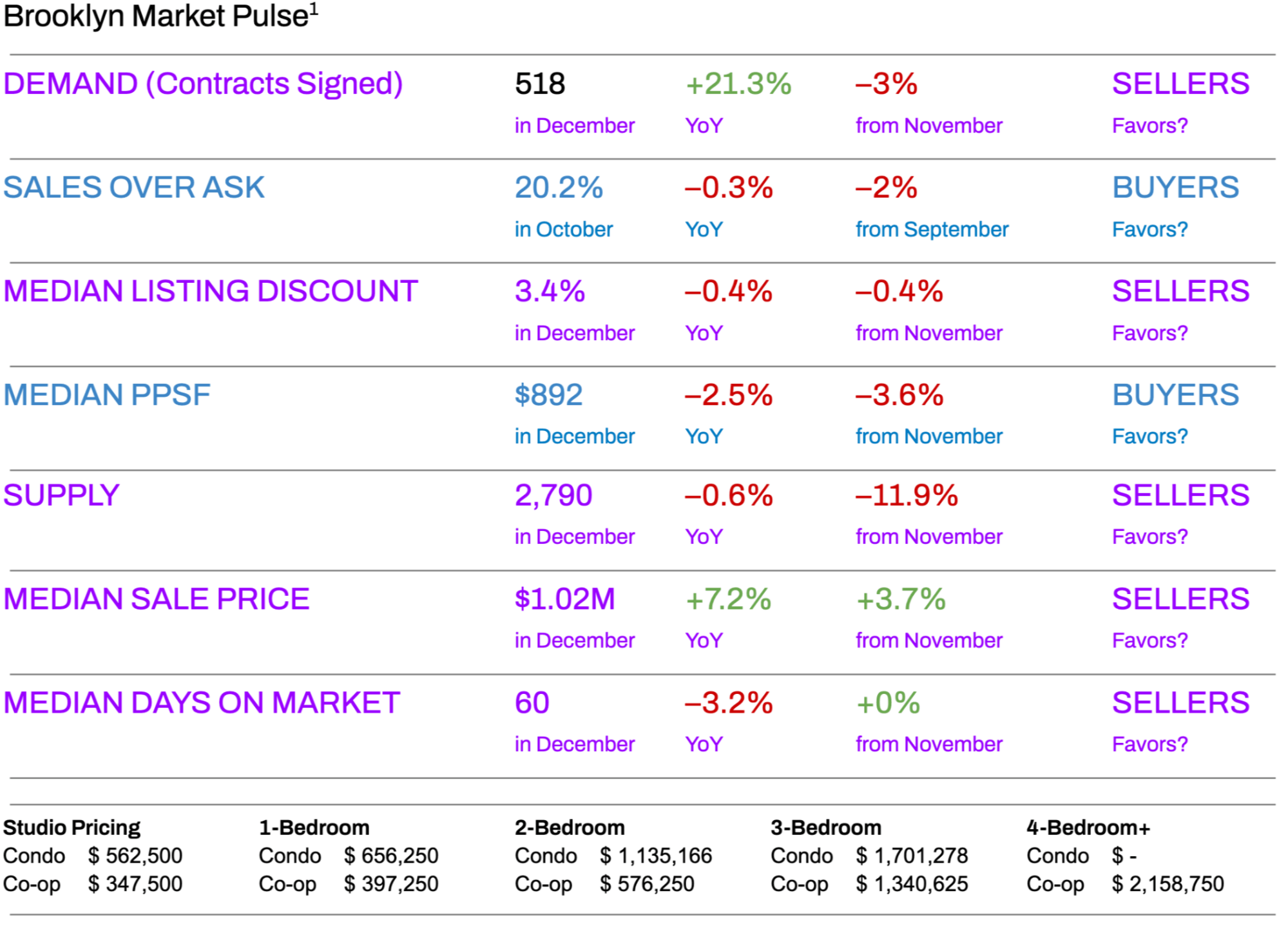
Brooklyn’s residential real estate market ended 2024 with a slight tilt toward sellers, as tightening inventory and steady demand set the stage for a more competitive landscape in 2025. December’s supply dropped to 2,790 units, down 11.9% from November and 0.6% year-over-year. This seasonal decline, driven by fewer new listings, holiday withdrawals, and strong buyer activity, continues a multi-year trend of constrained inventory.
Contract activity mirrored typical seasonal patterns, dipping 3% from November. However, the year-over-year story reveals significant growth, with December 2024 contract activity up 21% compared to the previous year and nearly 25% higher than December 2022. This sustained demand highlights a strengthening market dynamic as buyers act decisively despite limited options.
While the median price per square foot (PPSF) decreased to $892, reflecting a 3.6% drop from November and 2.5% year-over-year, this decline is likely temporary. Contracts signed earlier in the year during slower market conditions influenced these numbers. Looking ahead, rising demand and tight inventory are expected to reverse this trend, with annual price appreciation projected to resume in early 2025.
The median listing discount narrowed to 3.4% in December, down from 3.8% in November, signaling increased alignment between buyer and seller expectations. This tightening trend underscores growing leverage for sellers, particularly those with well-priced and well-presented homes. However, mispriced or unrenovated properties may continue to face challenges as buyers remain selective.
The Elegran | Forbes Global Properties Brooklyn Leverage Index further reinforces this shift toward a slight seller’s market, setting the stage for renewed confidence in the months ahead. Buyers should act quickly to leverage current opportunities, while sellers can prepare to capitalize on stronger spring conditions by presenting their properties strategically.
As Brooklyn heads into 2025, the market’s trajectory hinges on inventory levels, contract momentum, and buyer demand.
The Elegran | Forbes Global Properties Brooklyn Leverage Index² is powered by four indicators: supply, demand, median price per square foot (PPSF), and median listing discount.
It informs us whether the current is a buyer’s or a seller’s market, i.e., which party possesses transactional leverage. Looking at the graph below, this is indicated by the direction of the curve, where:
-An increasing trend from left to right indicates a seller’s market
- A decreasing trend from left to right indicates a buyer’s market
Our indicator also informs us regarding the relative strength of that leverage, indicated by the slope of the curve, where:
- A gentle slope indicates a weak advantage by one party over the other
- A sharp slope indicates a strong advantage
It’s not just the exact numbers that matter—it’s the direction and slope of the trend. After a brief seller’s market this spring, Brooklyn's real estate landscape shifted in favor of buyers over the summer. This fall, momentum swung back toward sellers, fueled by a surge in contract activity. However, in November, the balance slightly tipped again toward buyers, but the year concluded with a slight favor to sellers.
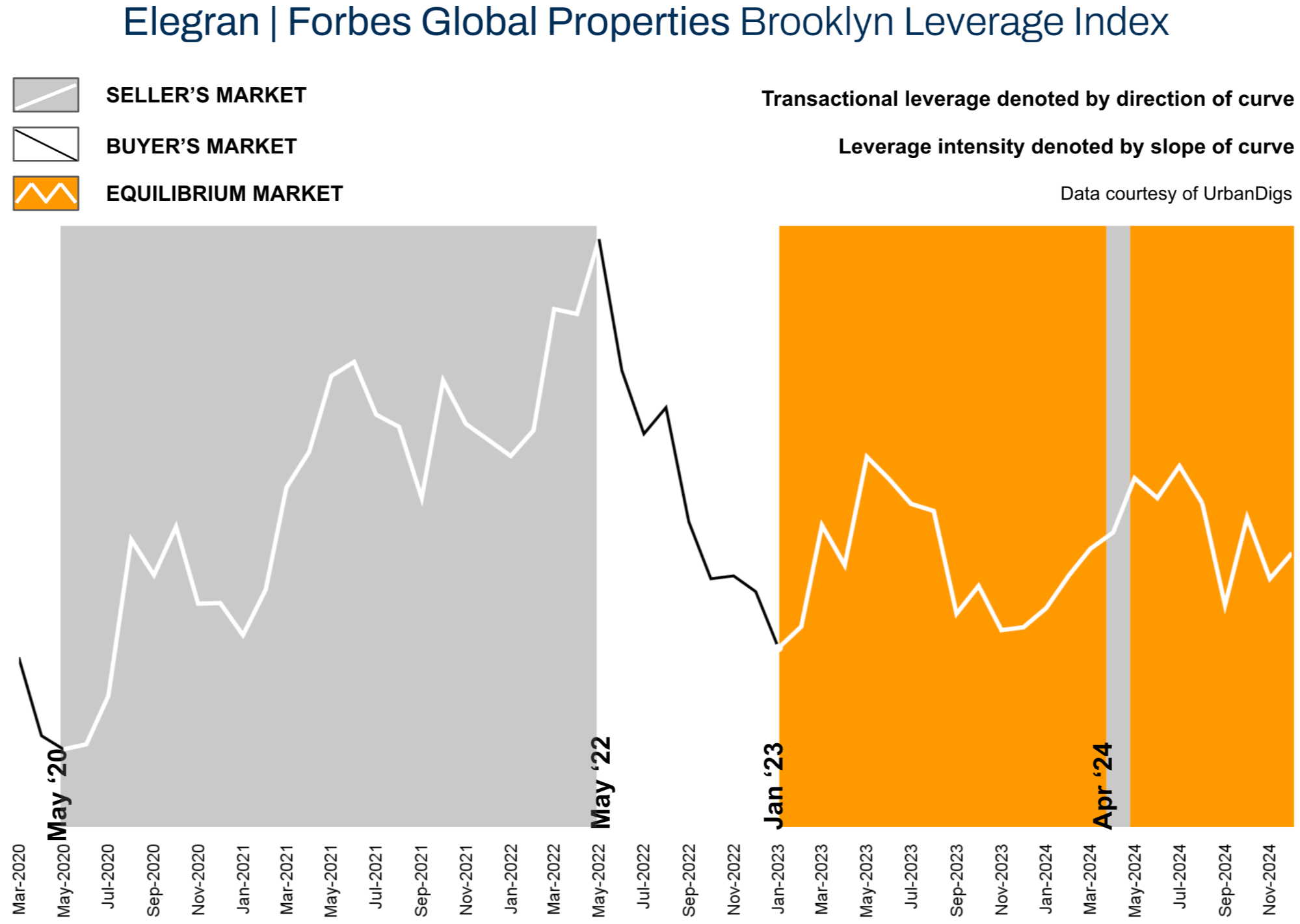
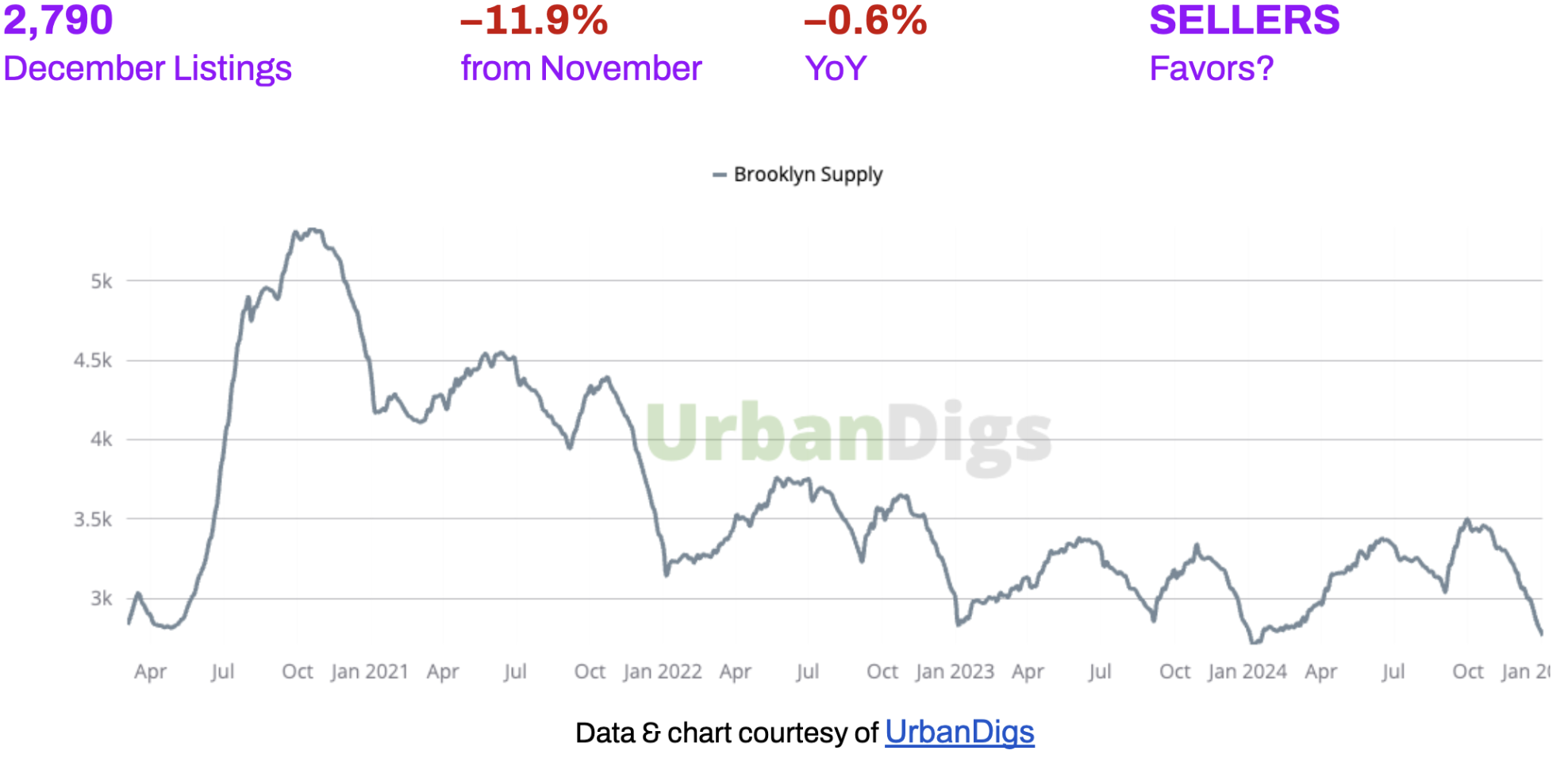
As expected for the season, Brooklyn’s residential real estate supply decreased in December, falling to 2,790 units. This represents an 11.9% decline from November and a slight 0.6% drop year-over-year, driven by fewer new listings, holiday withdrawals of unsold homes, and steady buyer demand. Importantly, supply remains notably lower than in 2021 and 2022, reflecting the broader tightening trend across the market.
While contract activity has also declined proportionally, this balance has preserved Brooklyn’s consistently competitive market dynamic. Over the past four years, this equilibrium has kept negotiability low, making it essential for buyers to act decisively and for sellers to price and present properties effectively.
What does this mean for:
As inventory remains constrained and demand steady, Brooklyn continues offering a resilient and competitive environment for buyers and sellers.
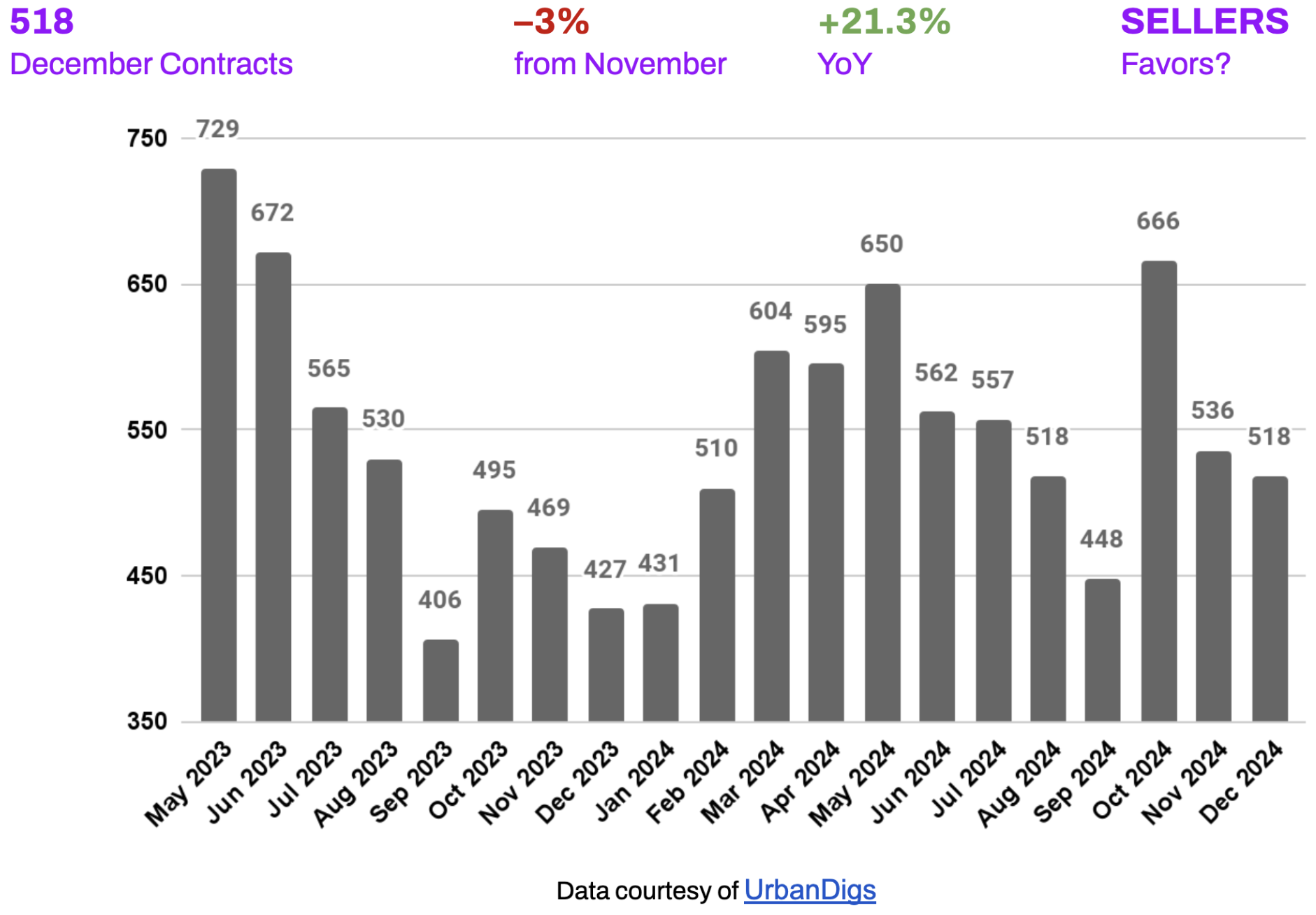
Brooklyn’s residential real estate market in December 2024 followed a typical seasonal slowdown, with contract activity declining 3% from November to 518 signed contracts. However, the year-over-year comparison paints a more compelling picture: December 2024 saw a 21% increase in signed contracts compared to December 2023 and nearly a 25% increase over December 2022, signaling growing demand and a strengthening market dynamic.
What does this mean for:
Buyers can leverage the winter season to make strategic moves, while sellers can anticipate continued demand growth and a potentially stronger market as 2025 progresses. Both sides should act with a clear understanding of the market’s evolving conditions.
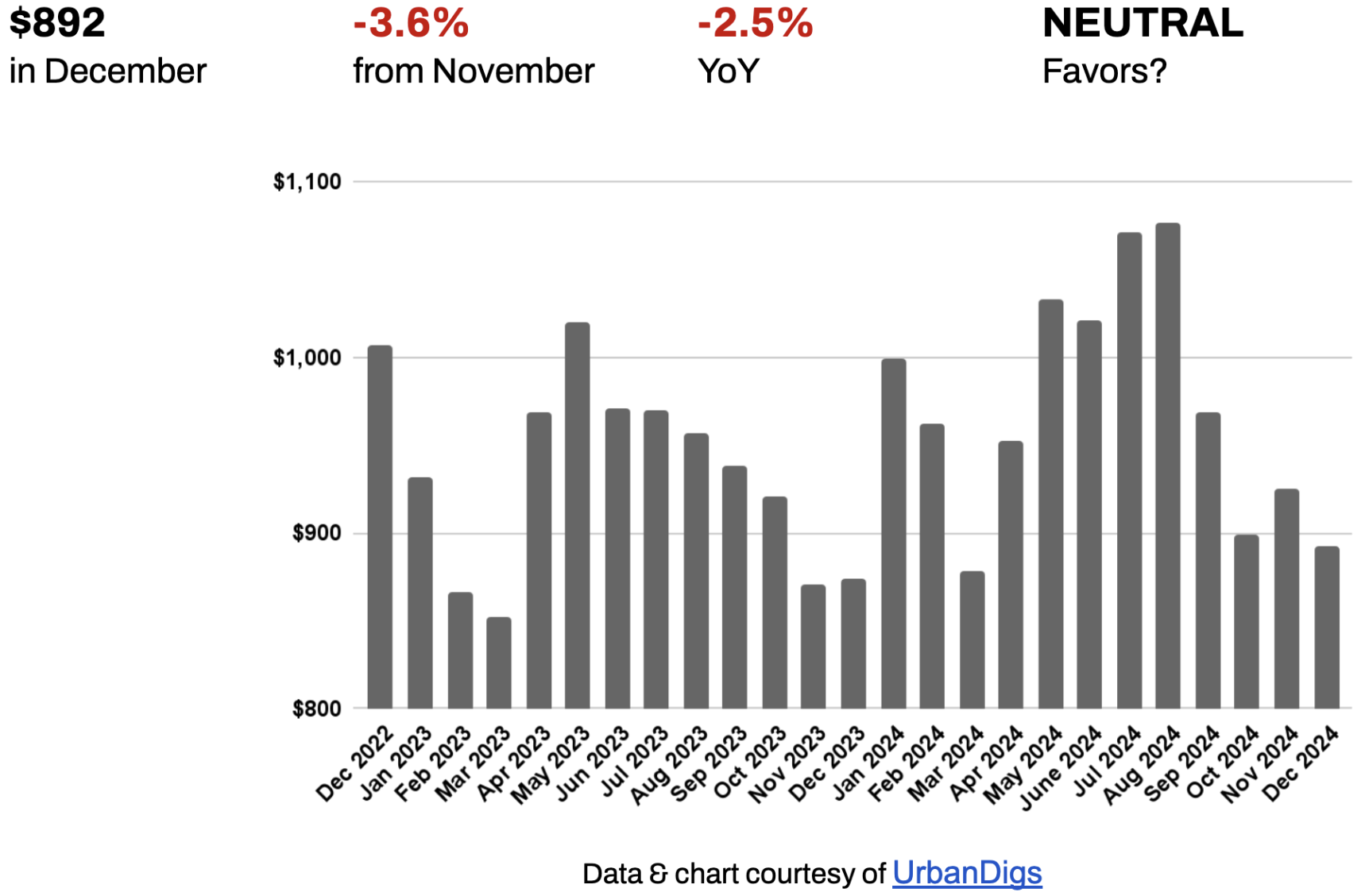
In December 2024, the median price per square foot (PPSF) in Brooklyn was $892, marking a 3.6% decrease from November and a 2.5% drop compared to December 2023. This decline reflects contracts signed during late summer and early fall, a period of lingering buyer fatigue before the market gained momentum heading into the holiday season.
What does this mean for:
The downward trend is expected to reverse as the market builds strength in early 2025. Annual price appreciation is likely to resume, driven by rising demand and constrained inventory, setting the stage for a more competitive environment.
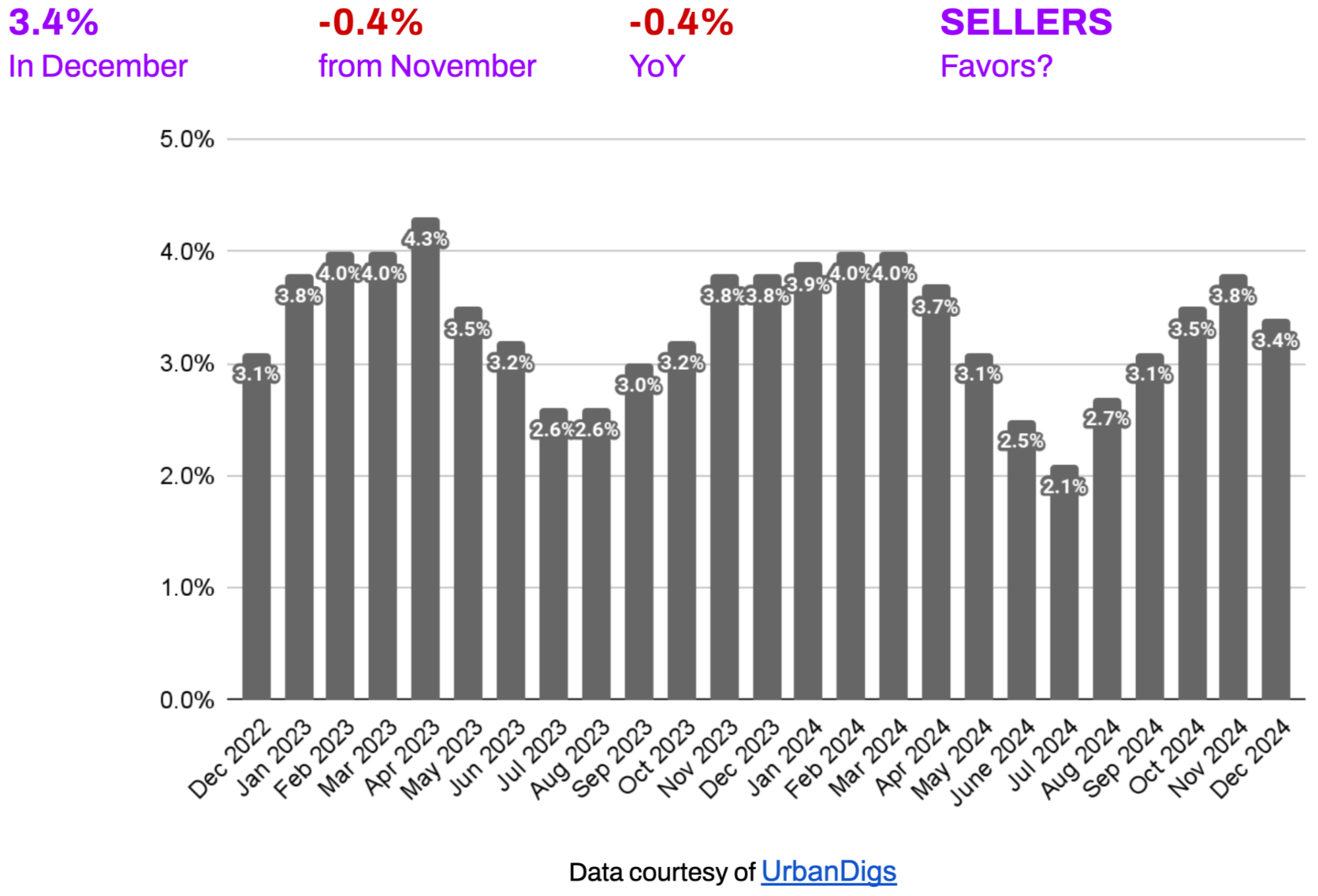
In December 2024, the median listing discount for residential homes in Brooklyn decreased to 3.4%, down from 3.8% in November, reflecting a slight year-over-year reduction of 0.4%. This narrowing discount aligns with contracts signed during late summer and early fall, a period marked by buyer fatigue before the market gained momentum heading into the holiday season.
What does this mean for:
Listing discounts are expected to tighten further as the market picks up pace heading into spring 2025. Increasing buyer competition will likely reduce negotiability, further favoring sellers and making the market more dynamic.
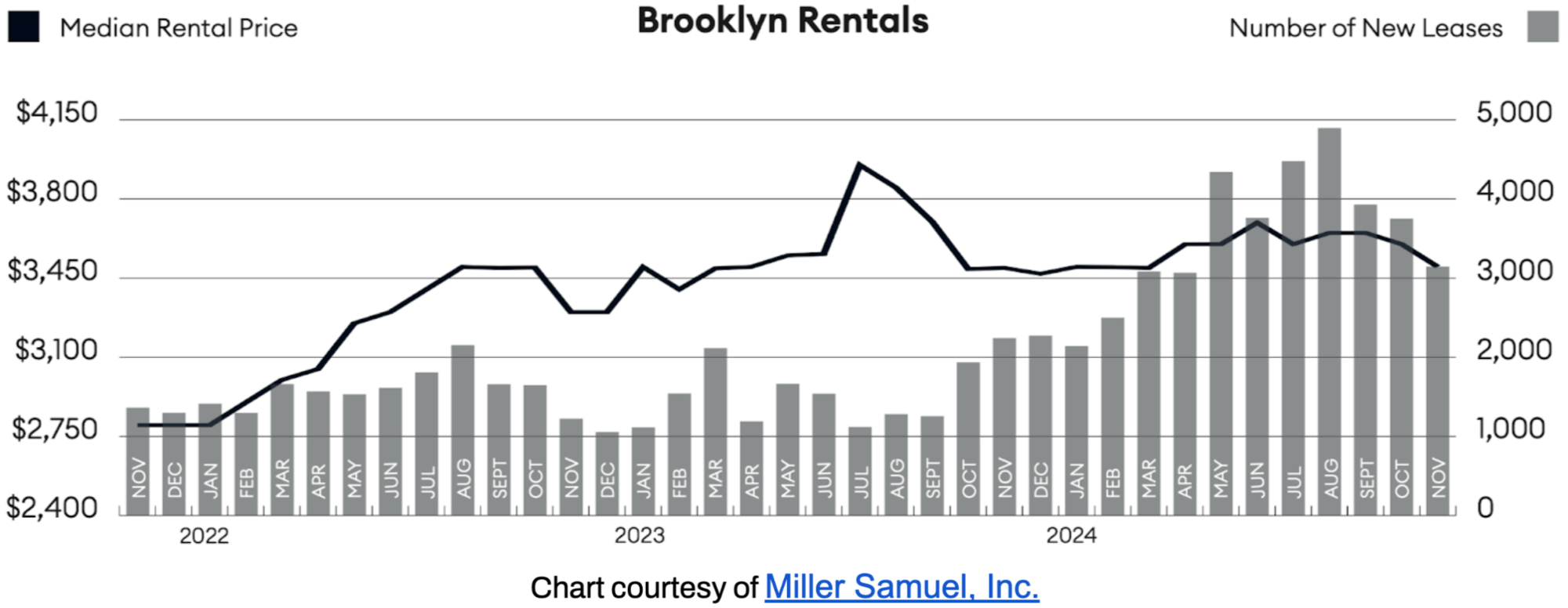
In November, the median rental price in Brooklyn decreased to $3,500, down from $3,600 in October, representing a 2.8% month-over-month decline. Despite this drop, the median rent posted a slight year-over-year increase of 0.1%, marking the second consecutive month of annual growth. New lease signings have also shown significant growth, rising consistently for the past fourteen months.³
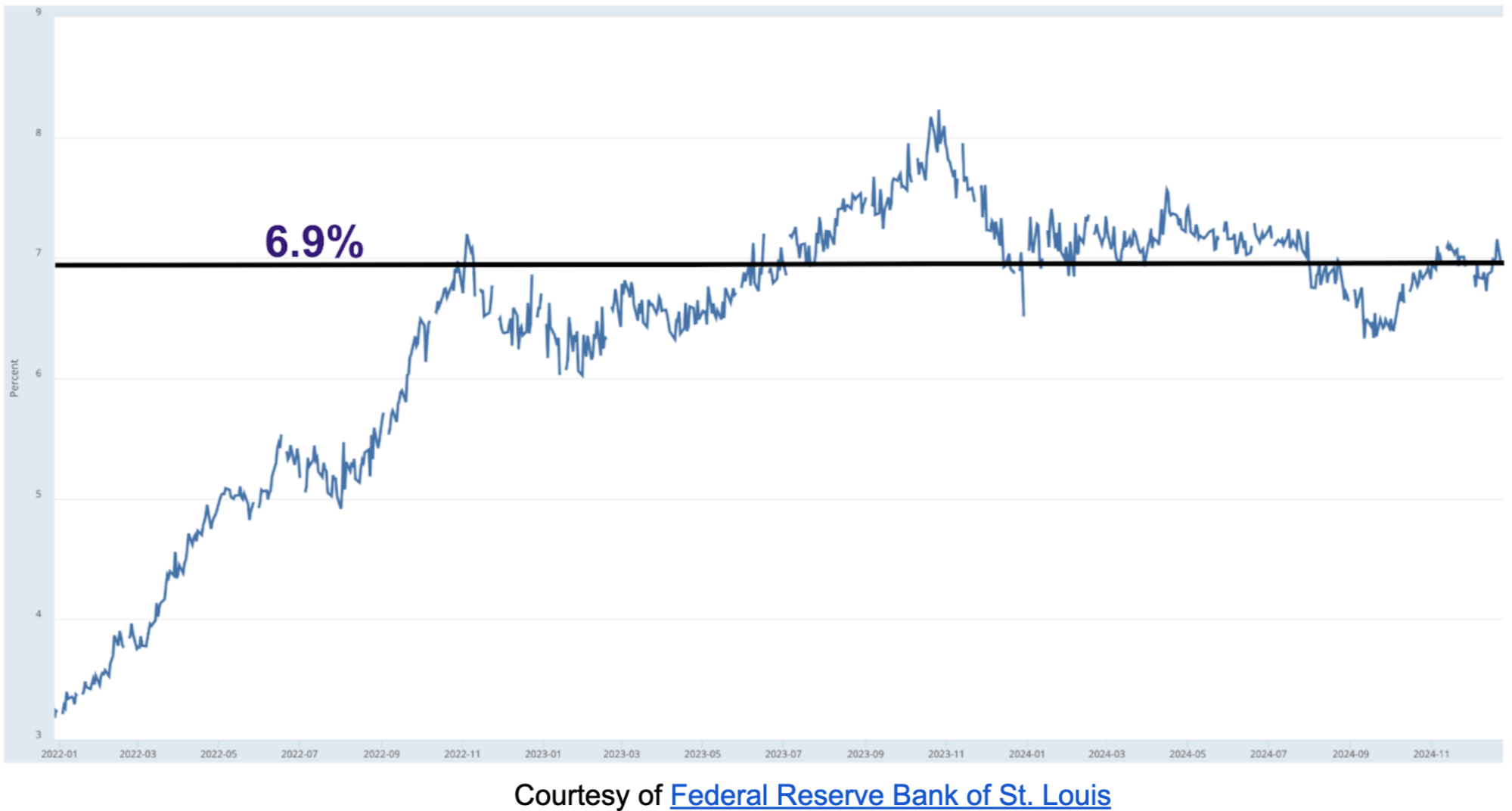
The 30-Year Fixed Rate JUMBO Mortgage Index is currently trending at 6.9%⁴, with the average JUMBO Annual Percentage Rate (APR) at 6.8%⁵. Although these rates had decreased in late August and into mid-September, they have since risen by 80 basis points after hitting a low in mid-September.
As economic uncertainty diminishes, interest rates are expected to stabilize. This stabilization should provide much-needed certainty for both buyers and sellers, encouraging transactions and easing market gridlock. A more predictable interest rate environment can boost confidence in the real estate market, leading to increased activity and smoother transactions.
Total returns in Brooklyn are driven by a combination of net rental income and capital appreciation. Current cap rates range from approximately 3.0% to 3.4% for all-cash investors. However, with the average JUMBO mortgage APR at 6.8%, net income potential remains elusive for those heavily relying on leverage. For foreign investors, the timing couldn’t be better. A strong U.S. dollar relative to native currencies enhances the opportunity to realize meaningful capital gains when selling assets in Brooklyn.
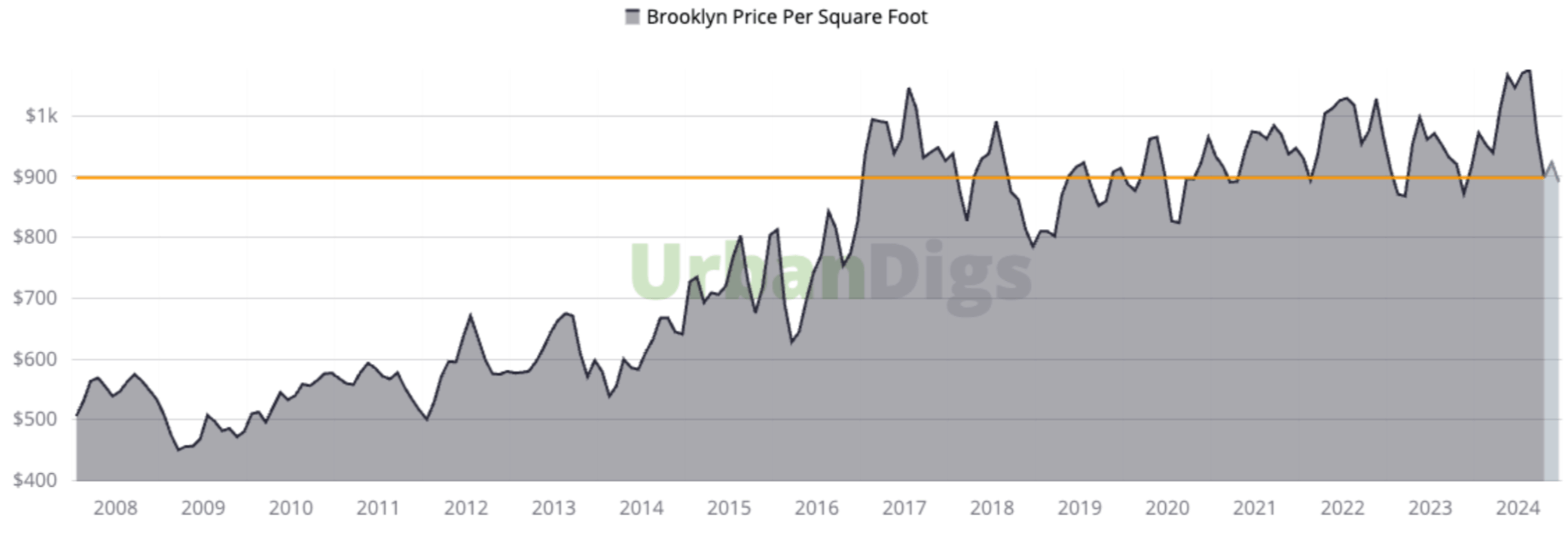
1. Data courtesy of UrbanDigs
2. According to the Elegran | Forbes Global Properties Brooklyn Leverage Index
3. Data courtesy of Miller Samuel, Inc.
4. Data courtesy of Federal Reserve Bank of St. Louis
5. JUMBO mortgage rate APR data courtesy of Bank of America, Chase, and Wells Fargo.
Her experience, expertise, and engaging personality make Sonal the perfect combination of advisor, advocate, and strategist. She is the proud owner of several NYC properties and a skilled negotiator with a deep understanding of people and sharp instincts about market trends.